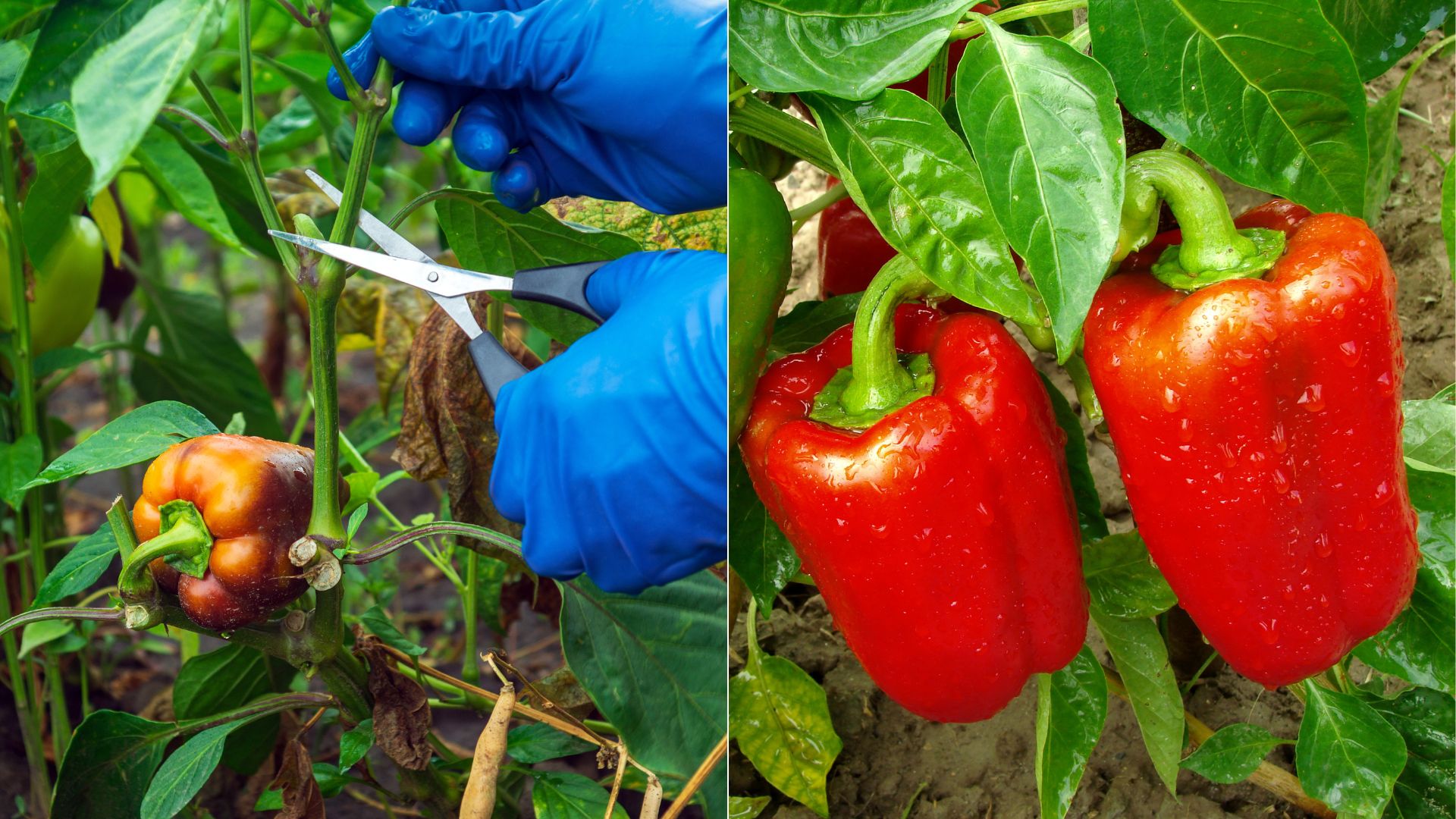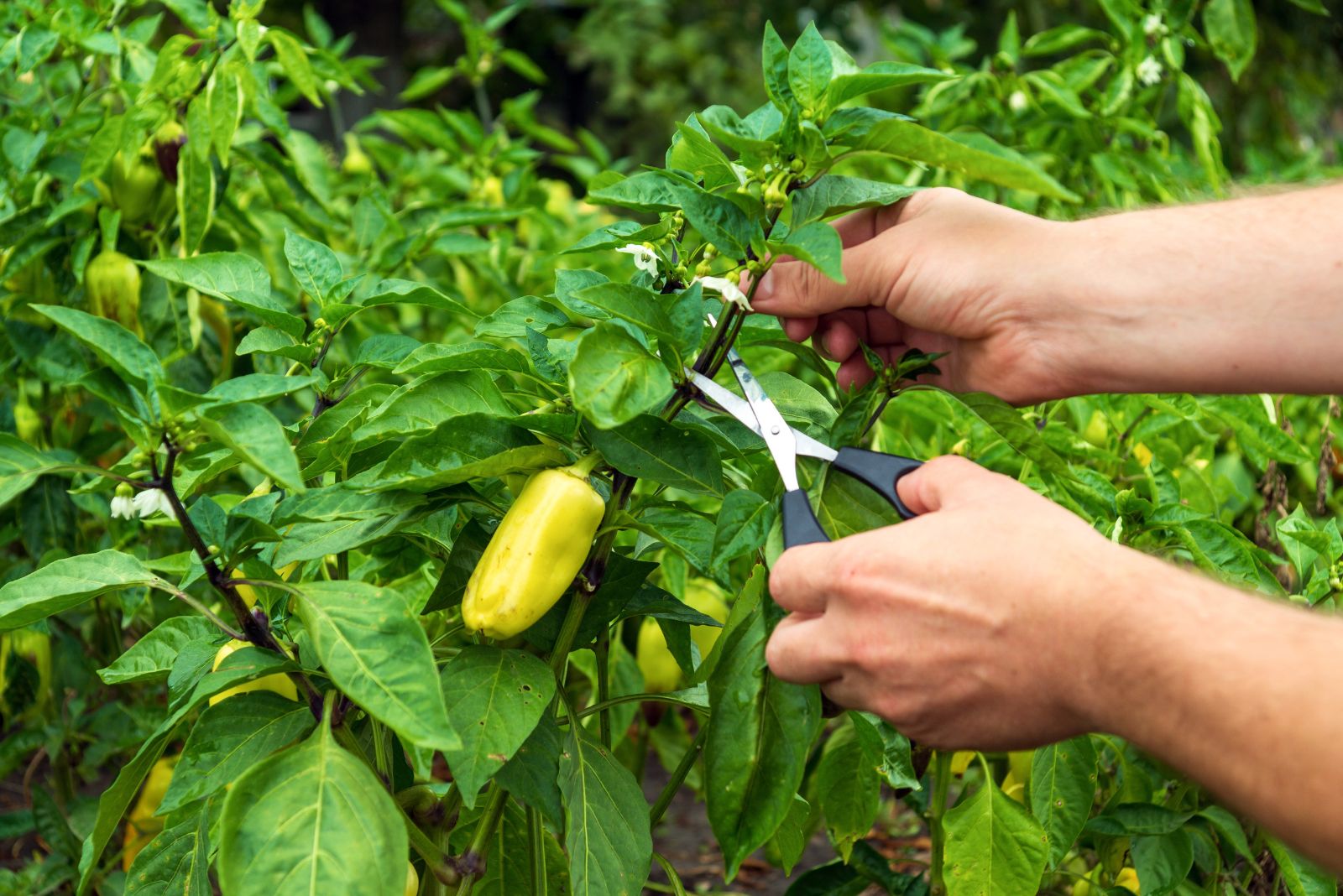Taking care of your pepper plants goes beyond just planting and watering. Pruning plays an important role when it comes to maximizing the health and yield of pepper plants.
By understanding how to properly prune your pepper plants, you can encourage robust growth, enhance fruit production, and create a more organized and thriving pepper garden!
No matter if you are an experienced gardener or just a beginner, mastering the techniques of pruning pepper plants is crucial. In this article, we are going to cover when and how to do so, so stay tuned!
Why You Should Prune Pepper Plants
If you were wondering if there are any benefits to pruning pepper plants or if it’s just purely for aesthetic purposes, let me tell you that there are numerous reasons why you should prune them. First of all, you will have much healthier plants. This is because, with pruning, you are getting rid of any damaged or diseased parts that could ruin your entire plant.
Plus, when you get rid of excess leaves and stems, you aid with air circulation, which prevents fungal diseases like powdery mildew and leaf spot.
Your pepper plants will also have sturdier stems because you get rid of side shoots so that your plant only focuses on producing sturdier main stems. Therefore, you won’t need staking as these plants are less likely to fall over from the weight of their fruit.
Pruning also promotes early ripening. When you prune at the end of the season, you can speed up fruit ripening. This is especially helpful if a frost is expected and you want to plant the rest of your peppers before it gets chilly.
Lastly, with pruning, you will get more peppers. This is because you remove stems and leaves so that the plant can direct its energy into fruit production instead of leaf and stem production.
If you are still not convinced, then check out this video:
When To Prune Pepper Plants
You can prune your pepper plants early in the season or late in the season when it’s time for harvesting. Early season pruning is done in late spring when the seedlings are just transplanted into the garden. This pruning encourages proper root development.
When it comes to late season pruning, it’s usually done in late summer to early fall. It’s best to do it around 3 to 4 weeks before the first frost. This pruning can encourage remaining peppers to ripen.
Early Season Pruning
No matter if you have grown your pepper plants from seeds or you have just transplanted the seedlings into the garden, pruning them early will encourage root development and prepare the plant for a successful growing season.
Start by removing early pepper flowers so that your plant only focuses on root and leaf production. Do this for 2 weeks after planting them in the garden.
You should prune any leaves that are near the soil line because they are more susceptible to pests and diseases. You can also remove any leaves that are within 6 inches of the soil line once your plants are about 2 feet tall.
This is also the time when you can reshape your plants. However, different pepper types need different pruning methods when it comes to shaping. In this case, do a little research and find out the best pruning method for your pepper varieties.
For instance, peppers with smaller fruits like jalapenos have bushier growth, which is why you have to top them – this is done by pinching away the top portion of the plant. Be sure to make your cut just above the second or third set of plant leaves above the plant’s base.
Peppers with larger fruits, like bell peppers, don’t usually require topping. By removing the tiny branches or suckers that sprout from the plant’s main Y-shaped stem, you can encourage your plants to produce a larger crop of peppers.
In both scenarios, make sure to use sterile pruners to avoid spreading pests and diseases.
Late Season Pruning
Late season pruning only requires removing leaves near the base of the plant or any leaves and stems that show signs of plant disease or damage. What you can also do is pluck off early fruits so that the plant can continue growing properly.
Once fall starts to come around, remove part of the leaves that are protecting your fruit to help peppers to ripen earlier. Don’t remove more than ⅓ of the leaves so that the plant can still have enough leaves for photosynthesis.
Most early green peppers can be eaten, but you should allow them to fully ripen because their flavor will improve significantly!
We have already mentioned that late season pruning is usually done 3 to 4 weeks before the first frost. Any branches that aren’t producing peppers should be cut off. You can also trim all stems and branches back by 6 inches, or make your cuts just above the plant’s highest fruit.
The last pruning will encourage peppers to ripen so that you can harvest them until the very last end of the season.


